Property Liability and your trees .
Although trees add tremendous value to the landscape,
if they are not monitored and cared for properly,
they can become a legal liability
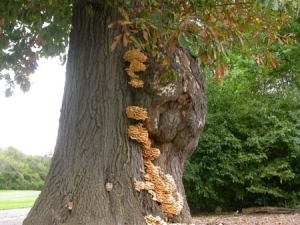
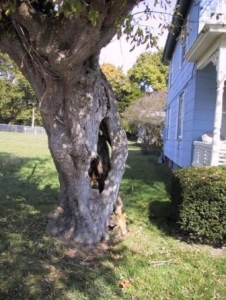
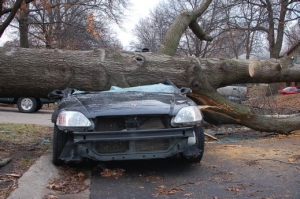
Premises Liability and You
Most property owners don’t realize that if they own property with trees they are legally considered a “Tree Steward”.
As a Tree Steward it is their legal duty to maintain their premises in a safe, hazard free condition, this also includes their trees.
A Tree Steward has a Duty of Care:
The law outlines a landowner’s responsibility, known in law as ‘the duty of care’, to take reasonable care to avoid acts or omissions which he or she could reasonably foresee may result in harm or injury. When a tree owner fails to exercise his or her responsibility the result may be a claim for negligence.
Tree Stewards with trees that could impact the general public, or in areas the general public has access, have a Greater “Duty of Care” then a Private Tree Steward.
Fulfill Your “Duty of Care”:
A good tree management plan includes Risk assessments, Mitigation options, and a Maintenance program. When the management plan is properly implemented, it can fulfill their “Duty of Care” and lessen the property owners Exposure to “Negligence Lawsuits”, reduce hazardous conditions and preserve the landscape’s Value.
This paper helps outline the responsibilities for property owners both public and private and Professionals. The term Professional includes almost anyone associated with managing a property in a “Professional” capacity, such as Property Managers, Construction Companies, Developers, Parks Departments, Cities, State and Federal Municipalities.
Trees and Negligence
Who is Considered Negligent?
A Property owner may be considered negligent if he or she has a tree that falls and harms a person or damages property. Generally, the tree has to cause injury or damage property for negligence to be claimed. Often courts take into consideration whether the property owner/manager was acting as a “Reasonable Person” in the care and management of their trees. The “Reasonable Person” “Standard of Care” may be different for different people and jurisdictions. Inspections and maintenance of trees might be considered reasonable for a home owner. However, Professionals may be held to a higher “Standard of Care” if a hazard tree goes undetected.
Whose Duty Is It?
Many states have recognized that, indeed, property owners have an expressed “Duty of Care” to inspect and maintain their trees. Attorneys have helped the Courts extend that responsibility to developers, builders, property managers and professionals who have agreed to “Act in a Property Owners Stead”.
Although some Management, Development, and Construction agreements cover these matters, many do not. If you are acting as an “Agent” for a property owner, make sure your contract clearly defines your responsibilities regarding tree management and inspection intervals. Without a contract, Professionals and others acting in the property owners’ stead may take on this “Duty of Care” Responsibility unknowingly or inadvertently and open themselves up to exposure to a liability lawsuit.
Property Owners and Professionals should work with a certified Arborist with Tree Risk Assessment Qualifications to develop an inspection and maintenance plan specific to your site.
A Level 2 Risk Assessment with Decay Testing is a good foundation for a management plan, it will help identify the structurally unstable trees and provide reasonable mitigation options. This forward-looking planning can fulfill the “Duty of Care” and help create a safe, healthy and resilient urban forest on your site.
In many states, property owners and those acting in their stead have a legal duty to protect workers, visitors, and passersby, including pedestrians and motorists, from Hazardous conditions. Out of recognition of this duty, property owners and managers remove snow and ice, repair fences, fix sidewalks and make sure there are no line-of-sight conflicts that impede the flow of vehicle and pedestrian traffic. Professionals should know this “Duty” may extend to trees and their care.
What the Law Says About Trees and Negligence.
It has been found that “Not Knowing” about a hazard is not an adequate defense, as it shows that the “Duty of Care” has not been implemented.
Trees have caused legal problems for centuries, every budding lawyer studies the 1466 “Thorns Case” concerning property damage caused by trimming procedures. In the past when a tree fell and caused damage, it was considered an “Act of God”. As the law has evolved, property owners have been found to be liable for injuries and damages caused by their trees. Courts across the nation have found that property owners have a “Duty” to inspect and maintain their trees, and in some cases remove limbs or whole trees if they are a hazard or impede line- of-sight. This has been a national progression of cases and state statues that deal with premises liability and the duties owed to guests and the public regarding any foreseeable problems from trees.
Managing the Risks on your Premises
How to Fulfil your “Duty of Care”
So what should a developer, planner, community, property owner or professional do? The following steps will help manage the risks and legal liability from your dangerous trees.
- Develop a tree inspection and management policy.
- Put the plan in writing and document the efforts to mitigate known hazards
- Work with a Certified Tree Risk Qualified Arborist. This professional should be trained in Advanced level 2 Risk Assessment and decay detection methods and be a member of 1 or more of the national arboriculture associations.
- Ask your insurance agent about your tree coverage. Request a discount when you develop and implement your tree plan, which lessens the carriers’ exposure to a claim.
- Work with your attorney and/or consultant to understand the legal requirements in your state.
Who will perform the “routine inspection” the law requires?
Theoretically the required inspection can be done by anyone, but may not fulfill the “Duty of Care”. There are many problems more complex than those highlighted in this document that only a specifically trained arborist can identify.
A Certified Consulting Arborist should.
1.Be knowledgeable about municipal ordinances and state case law as they relate to the responsibility for trees on private and public properties. 2. Have advanced training in Tree Risk Assessment, Mitigation, and Management Principles as well as Tree Biology, Soils & Hydrology, Local and Micro-climates, to name a few. 3. Have all current licenses, certifications, and Insurances, (General liability as well as Professional Errors and Omissions Liability) available to show the client.
AS property owners perform their “Duty” they must ensure Consultant they contract has knowledge of Tree Risk Assessment, structural analysis of trees, tree biology and tree specific habits. The trees shall be evaluated for location, condition, size, health, likelihood of failure, targets, likelihood of impacting a target, and consequences of impact.
Among those sites requiring special attention are:
. PARKS .SCHOOLS .PLAYGROUND .APARTMENT COMPLEXES .NEWLY DEVELOPED HOUSING SITES
.NEWLY CONSTRUCTED ROADS .TRAILS AND WALKWAYS .UTILITIY RIGHT-OF-WAYS .GOLF COURSES
.COLLEGE CAMPUSES .ADJACENT PROPERTIES .MATURE TREES NEAR SHELTER AREAS .BUS STOPS
Levels of Inspections
Level 1: Visual Assessment
The Level 1 assessment is a visual assessment from a specified perspective of an individual tree or a population of trees near specified targets to identify obvious defects or specified conditions. A limited visual assessment typically focuses on identifying trees with an imminent and/or probable likelihood of failure. Level 1 assessments do not always meet the criteria for a “Risk Assessment” if they do not include analysis and evaluation of individual trees. A constraint of limited visual inspections is that some conditions may not be visible from a one-sided inspection of a tree, nor are all conditions visible on a year-round basis. Also, a Level 1 risk assessment may not be adequate to make a risk mitigation recommendation. The assessor may use the Level 1 inspection to determine which trees require further inspection at the basic or advanced levels after which an appropriate mitigation can be recommended.
Level 2: Basic Assessment
Basic is the standard assessment that is performed by arborists in response to a client’s request for tree risk assessment.
A level 2 or basic assessment is a detailed visual inspection of a tree and surrounding site, and a synthesis of the information collected.
- The crown of the tree is examined for current vigor. Inspecting the crown (foliage, buds and branches) for color, density, form, and annual shoot growth, limb dieback and disease. Branches are inspected for cracks and other defects, well as needs for remedial pruning.
- The root collar and roots are inspected for the presence of decay, insects and/or damage, as well as if they have been injured, undermined or exposed, or original grade has been changed. Inspection tools include: binoculars, hypsometer, magnifying glass, mallet, shovel, & probe may be used. LEVEL 2 Advanced testing for root and trunk decay may be needed for an accurate assessment
Level 3: Advanced Assessment
Advanced assessments are performed to provide detailed information about specific tree parts, defects, targets, or site conditions. They are usually conducted in conjunction with or after a basic assessment if the tree risk assessor needs additional information and the client approves the additional service. Specialized equipment, data collection and analysis, and/or expertise are usually required for advanced assessments. These assessments are therefore generally more time intensive and more expensive.
Trees, Constructions & Development
Construction and development is an important part of a communities’ growth.
When a property is under development, most of the focus is on building the infrastructure, However the existing trees and plants are often overlooked.
Pre-Construction planning with a Certified Arborist can help preserve these valuable resources by looking at the impacts of construction on the trees and devising a tree preservation plan that works in harmony with the proposed development and future site activities. A good management plan will reduce the impacts to the trees being saved, great a more resilient urban environment and reduce liability from tree related lawsuits.
As development continues, Hazard trees are sometimes inadvertently left standing. This is a result of zoning laws to “Preserve trees” public outcry to keep the trees, a desire to keep the budget down, a lack of knowledge of damages of construction impacts to the trees or ignorance regarding tree structure, biology, and the law. The result is that far to often owners and project managers keep trees that present a potential for damages without realizing the possible consequences.
A post construction inspection by a certified arborist with advanced risk assessment qualifications can help: identify these hazards, fulfill the “Duty of Care” and reduce exposure to tree related liability lawsuits.
Communication and documentation
Whether you’re a school superintendent, property manager, developer, construction manager, any professional or land owner, when you contract with your consulting arborist communication is key.
You should clearly define what the arborists duties are and expectations. And should include but not limited to the following:
1.Clearly define the areas and trees to be inspected. 2.Let your arborist know how the site is normally used, and if there is any planned site changes. (Without this information a Hazardous Situation maybe over looked.) 3.Clearly state the level of inspection and authorized cost. 4. Go over the time frame the assessment is looking at. (all trees fail at some point, time frame of 3 to 5 years is usually reasonable) 5.Go over the level of detail required in the report 6.Inspection intervals (usually 2-5 years or after a significant weather event)
Get It in Writing:
Sometimes property owners say “don’t tell me about it” because they think that if a hazard is not identified and they “don’t know about it” then they are not liable. However, courts repeatedly have found property owners are “Tree Stewards” have a “Duty” to inspect and maintain their trees, and “Not Knowing” is not an adequate defense. Regardless of whether a problem is documented, in many states, the duty still exists to inspect and maintain the trees.
Once identified, the Consulting Arborist should document the potential hazards and mitigation options in writing and both parties should sign the report and acknowledgement of its receipt. Both parties should keep copies of the contracts and reports on file. Documentation maybe needed to show the “Duty of care” has been fulfilled.
Summary
The courts across the country have have established that a property owner with trees is considered a “Tree Steward” and along with being a tree “Tree Steward” comes a “Duty of Care”. The Duty of care and “Standard of Care” is greater for municipalities and professionals than a home owner.
Hiring a certified Arborist with Risk Assessment Qualifications to do routine inspections can lower your exposure to tree related Lawsuits and help fulfill you “Duty of Care”
As you work to fulfill you “Duty of Care” and reduce your exposure to Liability lawsuits, you also are helping to create a healthier, safer, beautiful and resilient urban forest.
We are experts in Risk Assessment, Mitigation, Response planning and training. Contact us today to discuss the management of your property and tree risks.
Daniel Maple A.B.C. Consulting Arborists LLC
ISA Certified Arborist/Risk Assessor ISA # PN-7970A
Email: Daniel@AbcArborist.com Phone: (509) 953-0293
Serving: Washington, Oregon and Idaho
Your guests, adjoining neighbors, passerby’s, and your community thank you for contribution to a healthier safer environment.! Thanks J
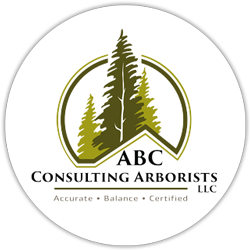
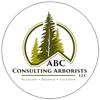
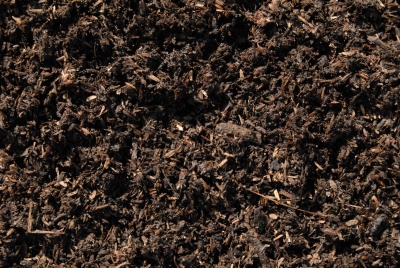
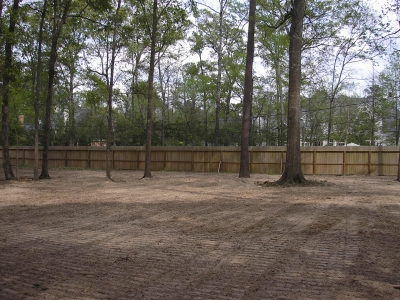




Recent Comments